April 2, 2019
Friday, March 22nd was the first day of a five-day break at school. I headed for the airport in Lamezia Terme and boarded a RyanAir jet bound for Pisa. Cousin Massimo was meeting me at the airport and taking me to Benabbio to spend a few days with him and Zia Fidalma.
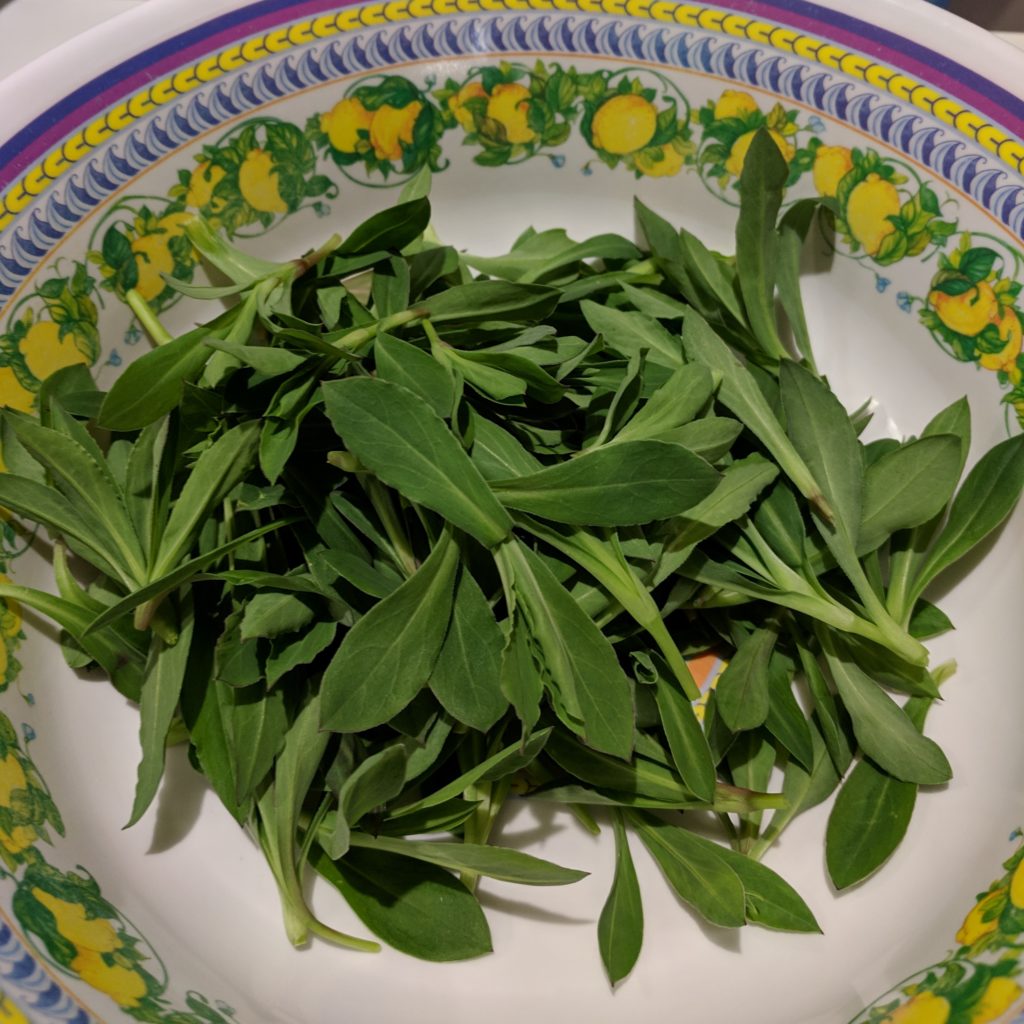
The flight was uneventful but boarding was a bit chaotic. Though it seems to vary on different routes, RyanAir basically has three levels of tickets: Cattle Call, Priority, and Priority with Expedited Check-in. Priority sounds like a good thing since you get priority boarding (there’s no such thing as boarding by row or group number in Italy) until you realize that more than half the plane has bought Priority; mostly so they can bring more than a toothbrush onboard.
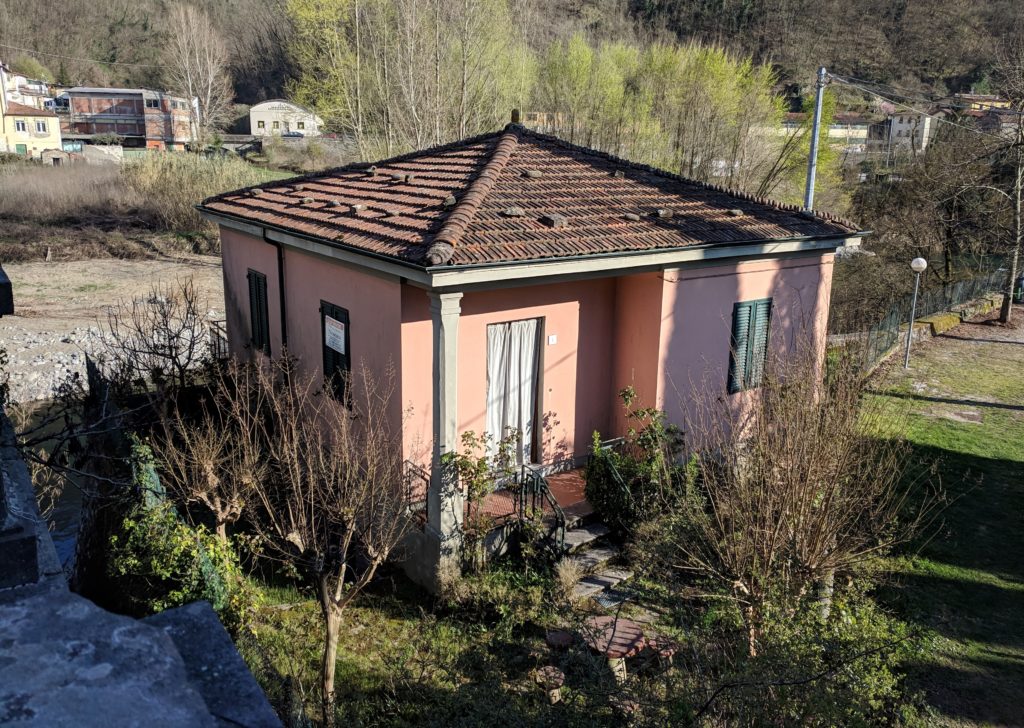
Before the announcements start at the gate, passengers start forming into a mob, polite mind you, but still a mob, stretching from the gate agent outwards, filling any possible space in the boarding area. Apparently, this is Priority but unless you’ve flown RyanAir before, you wouldn’t know. Till I figured out what was going on (which really taxed my minimal Italian), I was only a few passengers from the end of the mob.
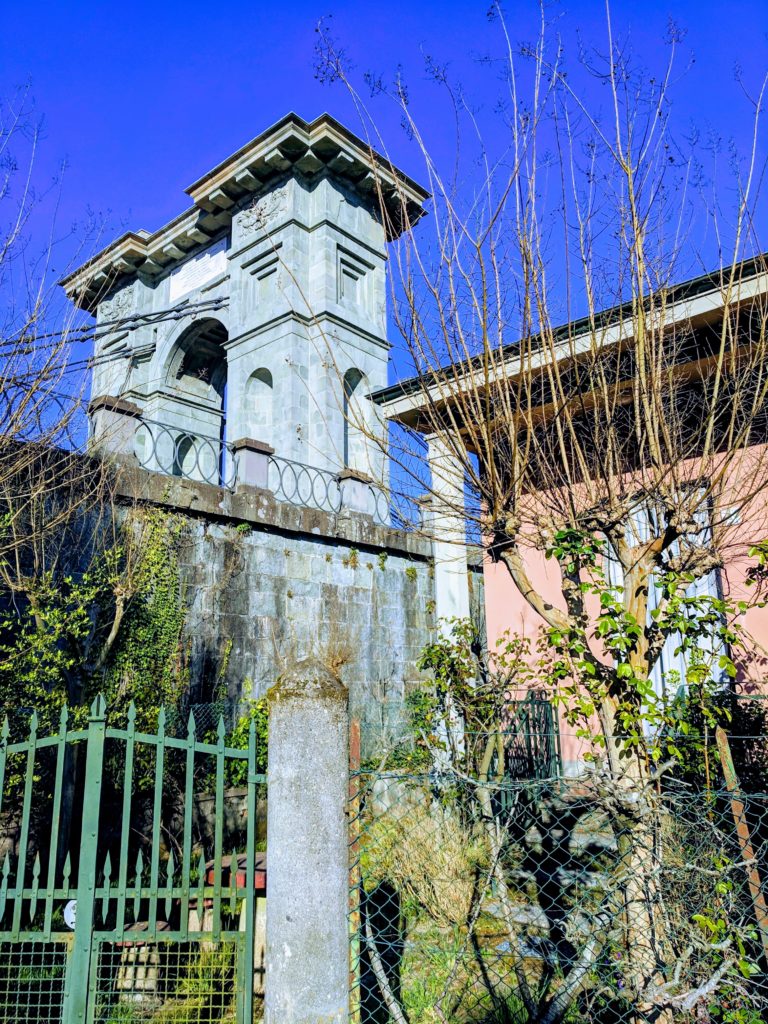
The Cattle Call passengers actually stay seated in the gate area. They can only bring on one bag that weighs a maximum of 7 kilos (just under 15½ pounds) and it has to fit under their seat, which is likely to be a middle seat since they don’t get to select their own seats. They don’t really need to try to sneak on the plane early, as happens in the States, because they don’t need to struggle for bin space because they can’t bring more than one small bag onboard.
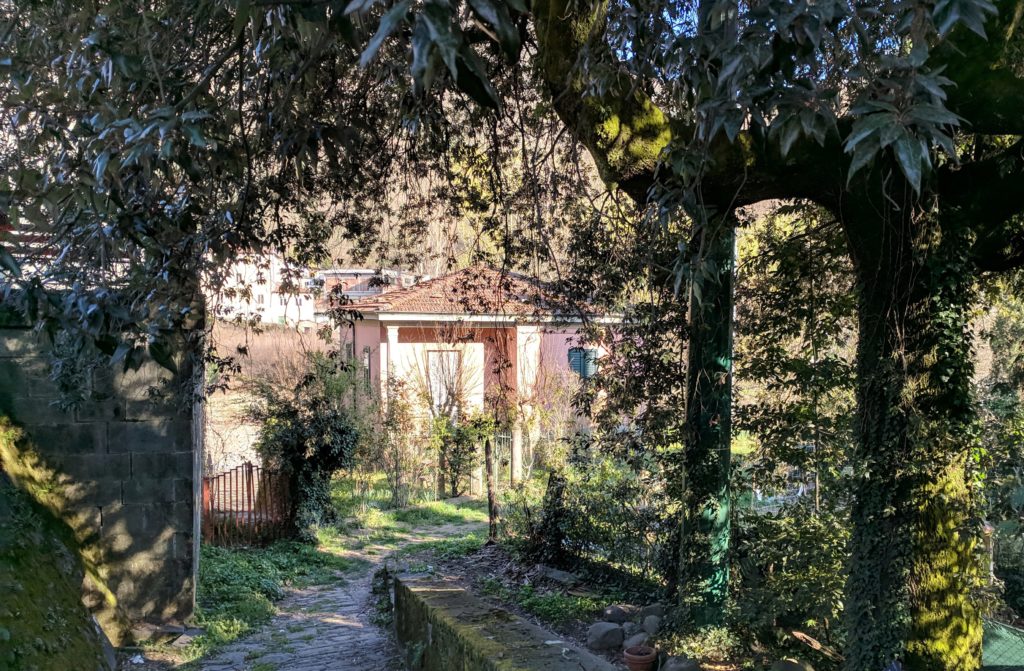
There was a small group of Priority Plus passengers queuing tranquilly at the gate. None of them was Italian. It’s not clear why they’ve paid more than the cost of Priority to get expedited security screening. The airport in Lamezia Terme is small and there’s not much time to be saved. Also, the Italians don’t make you take off your shoes or remove your liquids or laptop! Getting through security is pretty easy.
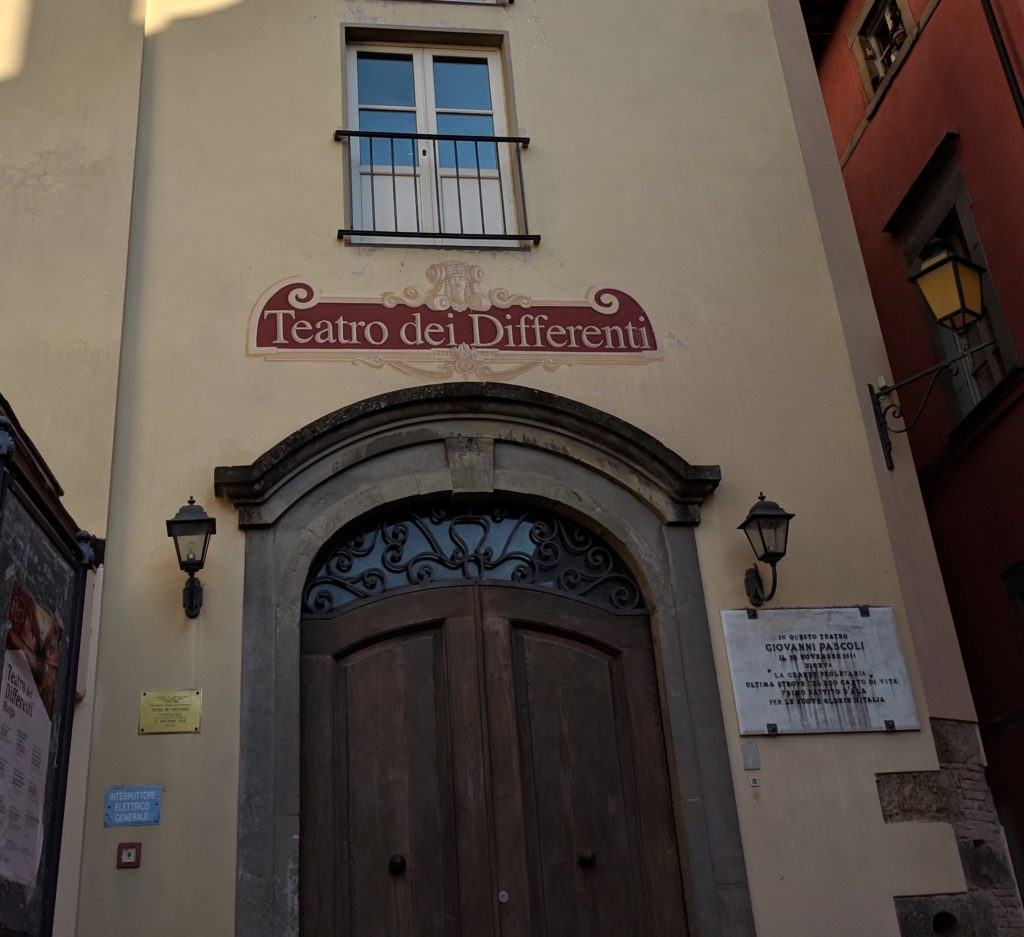
It turns out that being at the end of the Priority mob isn’t a big deal. After we clear the gate, we head down the ramp to form another mob near a set of sliding glass doors. There’s lots of empty space and I get a spot near the doors as people congregate leisurely in this much bigger space.
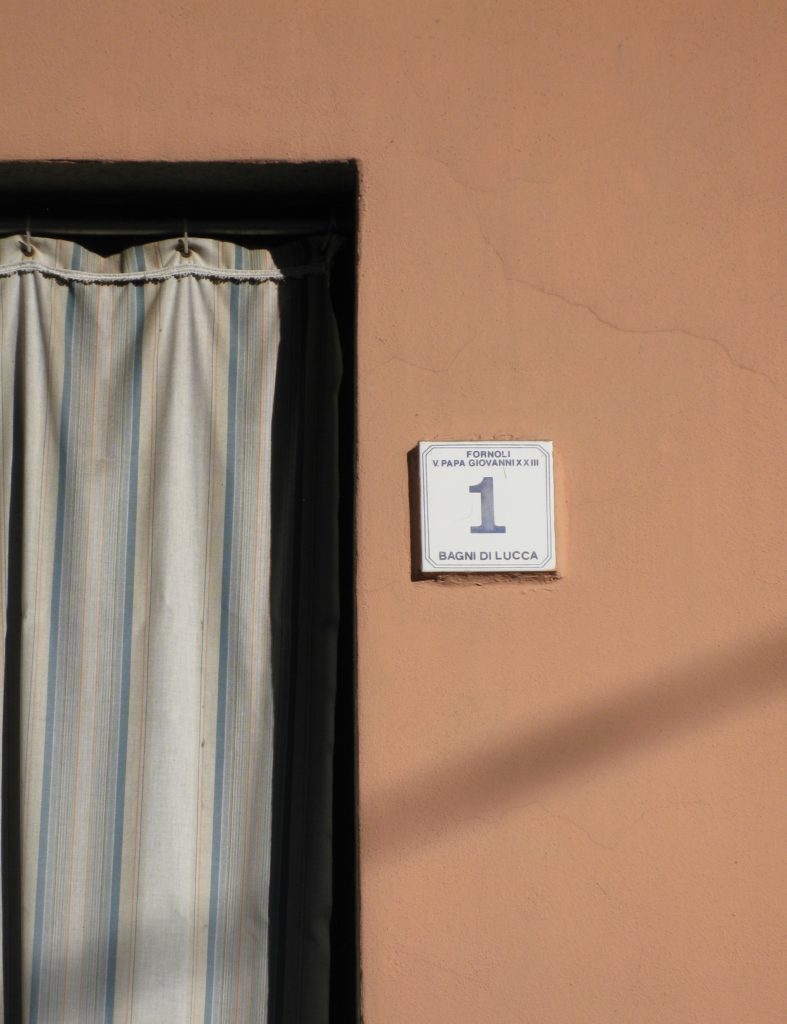
Once all of the Priority passengers are in the new holding area, the doors open and we walk across the tarmac to the waiting plane. This is not a regimented, walk-in-a-line-on-the-striped-area-toward-the-plane walk. This is more like the running of the bulls in Pamploma, just slower. Italians never seem to be in a hurry, unless they’re driving. I head toward the stairs at the back of the plane because my boarding pass says that’s where I should enter. It turns out, I’m pretty much in the middle of the plane (row 18 out of 36 rows).
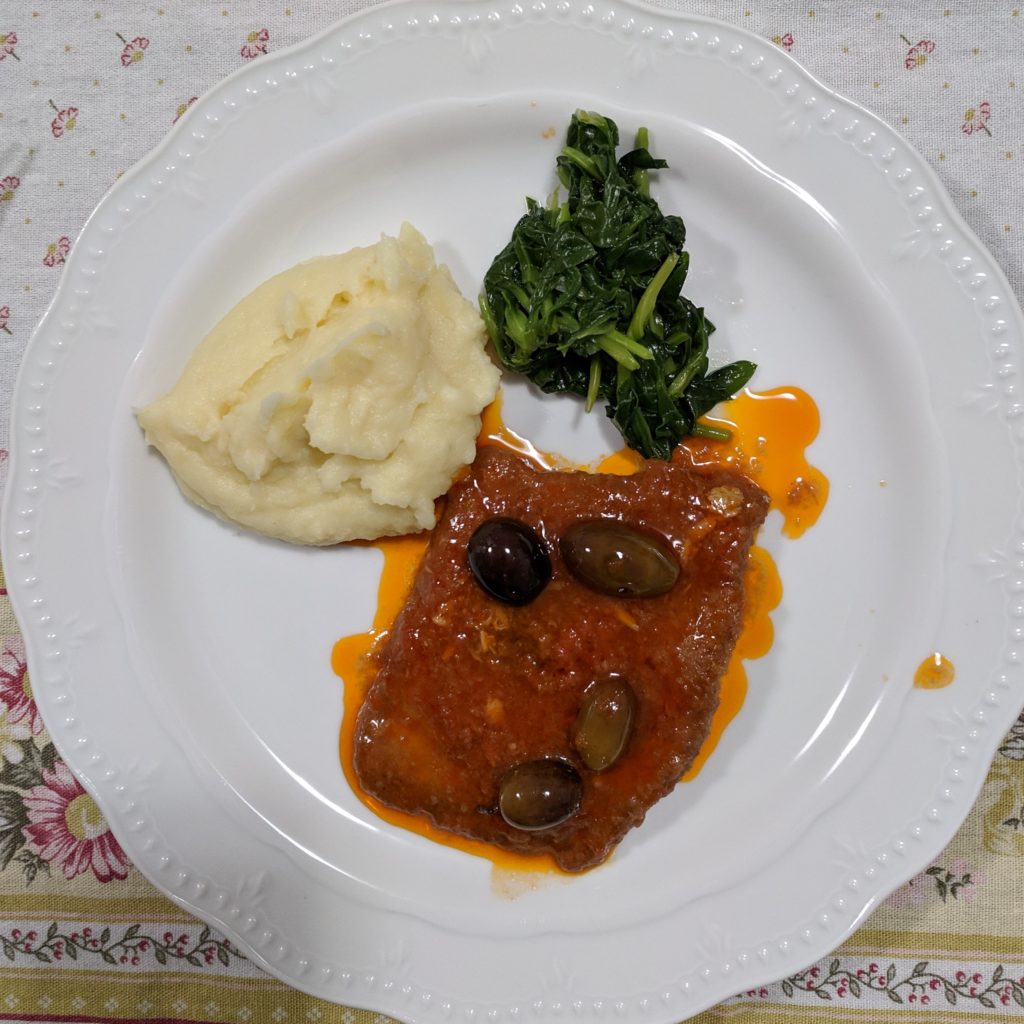
Italians never seem to be in a hurry unless they’re behind the wheel. (I just said that, right?) They stand in the aisle having conversations, taking off their jackets, neatly folding their jackets, putting their folded jackets on top of their bags in the overhead bins, having more conversations, thinking about getting out of the aisle and sitting. I’m convinced they’d stand there and have coffee if they could!
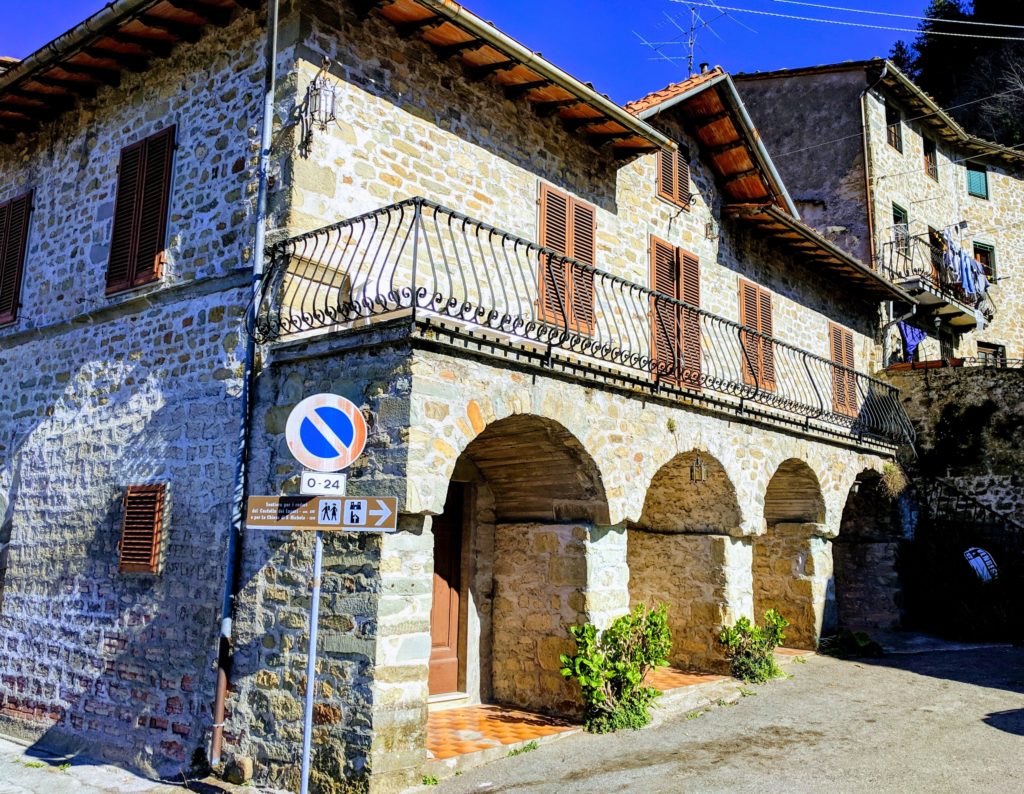
I finally make it to my seat, still uncrowded and with open overhead bins, but not before a slight, soft-spoken older man with a nice smile tries to have a conversation with me…in dialect. I had no idea what he was saying and smiled and nodded as I found my way to my seat, hoping I wasn’t being socially inappropriate.
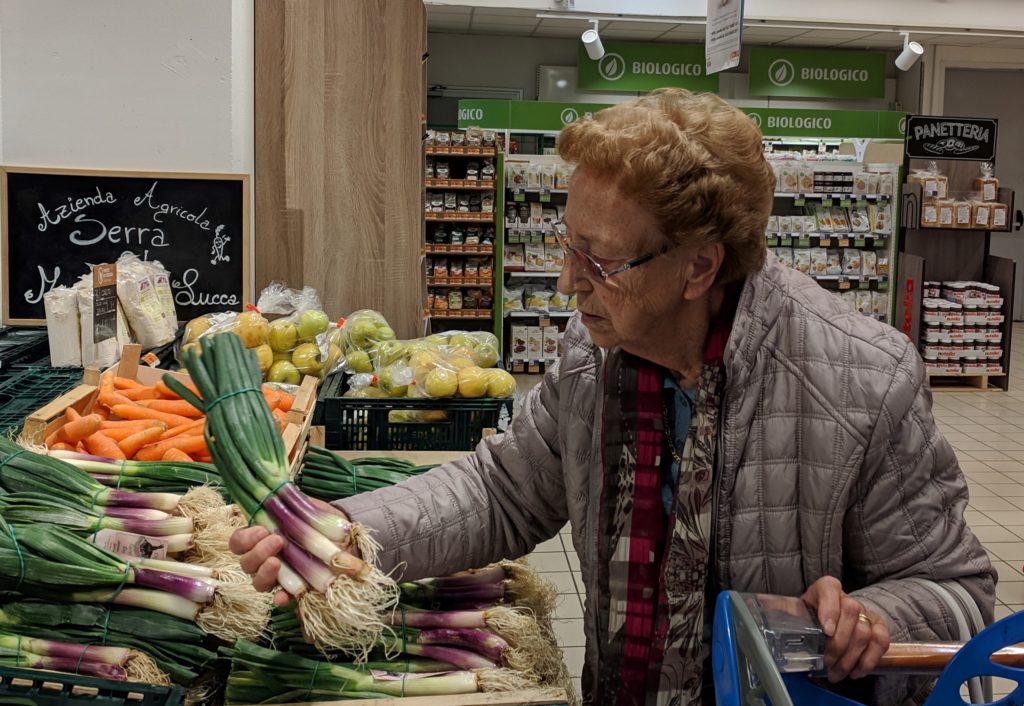
Massimo picked me up at the Pisa Airport and we drove about an hour to Benabbio where Zia Fidalma, and lunch, were waiting. Lunch was Zia’s wonderful Minestra di Fagioli made with borlotti beans, cooked and pureed, with a bit of pasta (lumache, specifically) added.
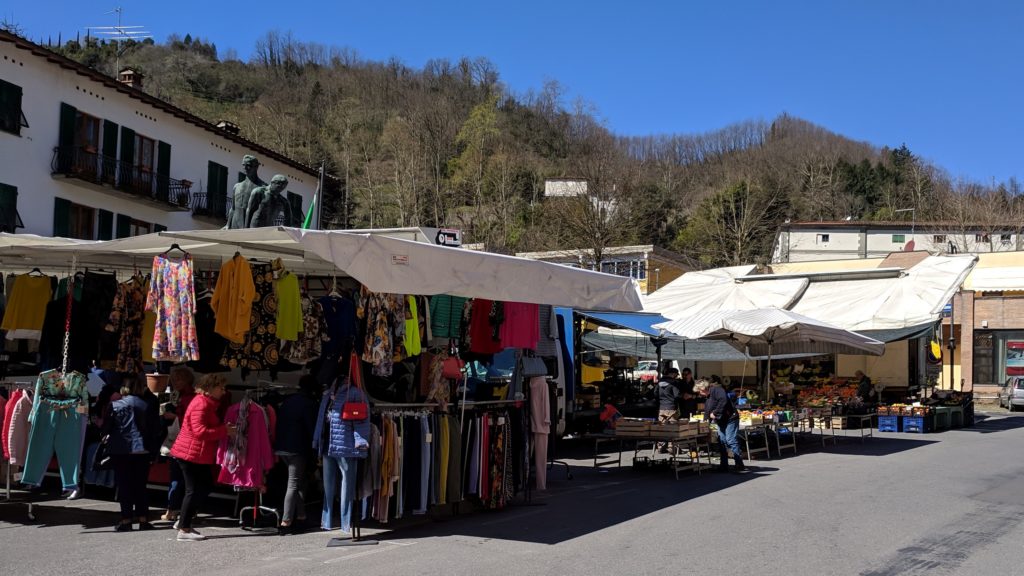
I heard about this soup when Zia Fidalma, Massimo and Francesca visited Calabria in February. It definitely lived up to the hype. At the table we drizzled it with unfiltered olive oil made from their own olive trees and added a bit of black pepper. Red wine accompanied the soup. Bread allowed me to sop up every bit of soup from my bowl before proceeding to cheese and fruit.
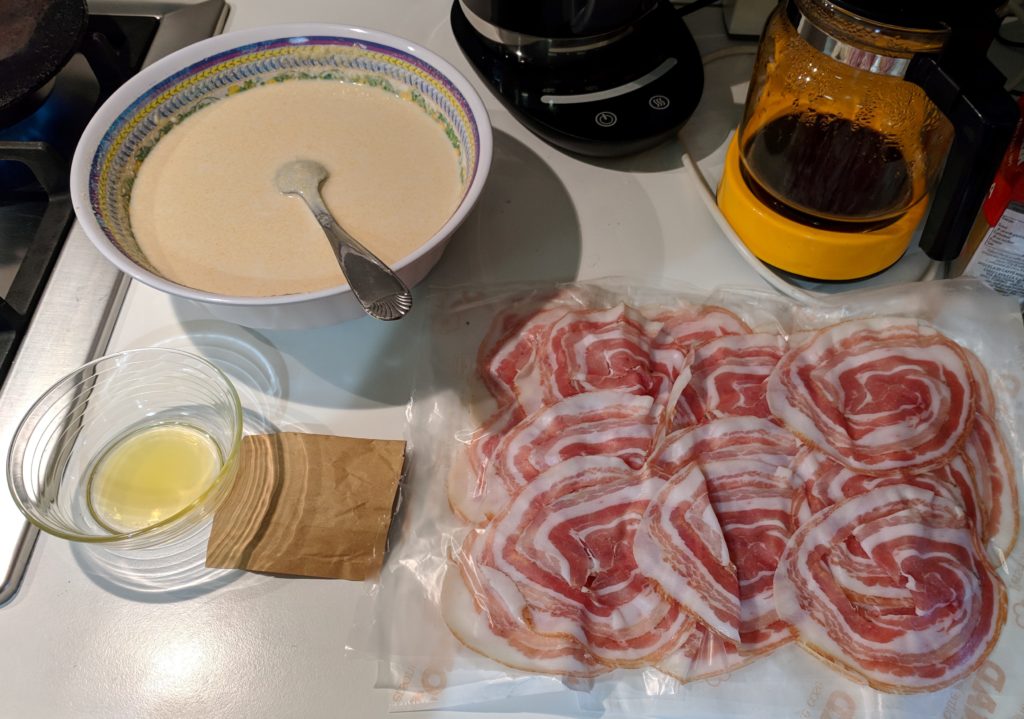
After lunch, Massimo and I walked to their garden plot full of olive trees. In years past, vegetables would have been planted among the trees but no longer. We picked a wild green, cavoletto, which accompanied our dinner later that day.
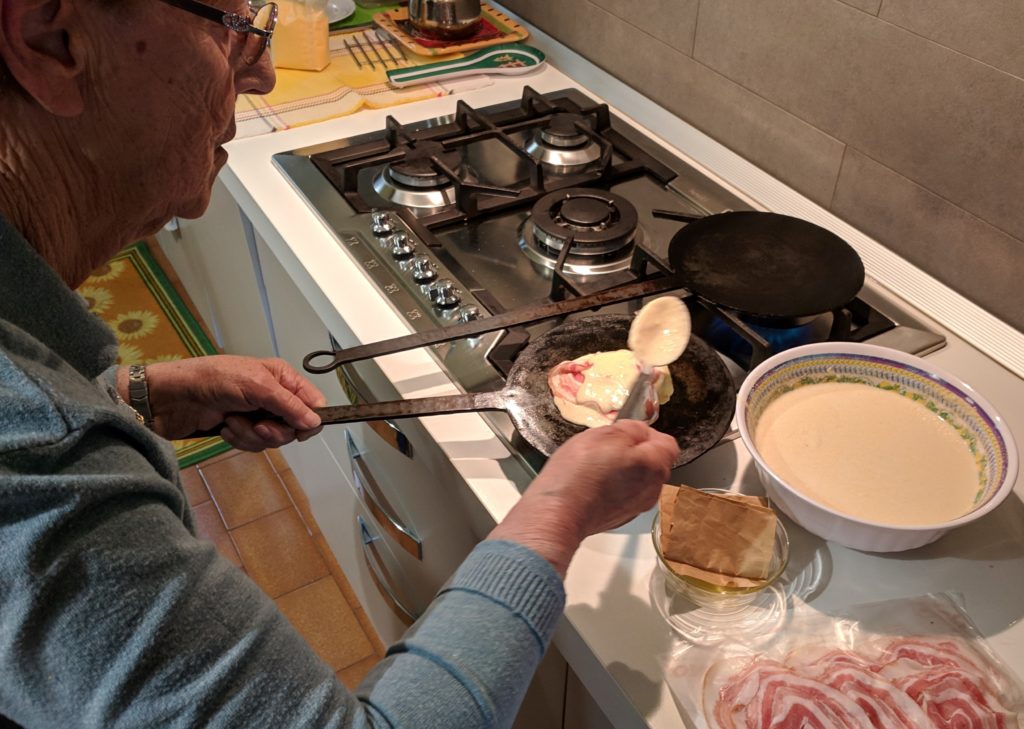
After lunch Massimo and I took a drive. First to Fornoli to see the house in which my father-in-law grew up, dubbed Casa Pieri by Zia Fidalma and Massimo. The house, 90 square meters (less than 970 square feet), is for sale for €150,000, a steep price. Afterwards we went to Barga, a picturesque town where my husband’s grandfather was born. We made a short stop at a wine shop in Bagni di Lucca owned by one of Massimo’s friends before getting to Benabbio just after 7 PM for dinner.
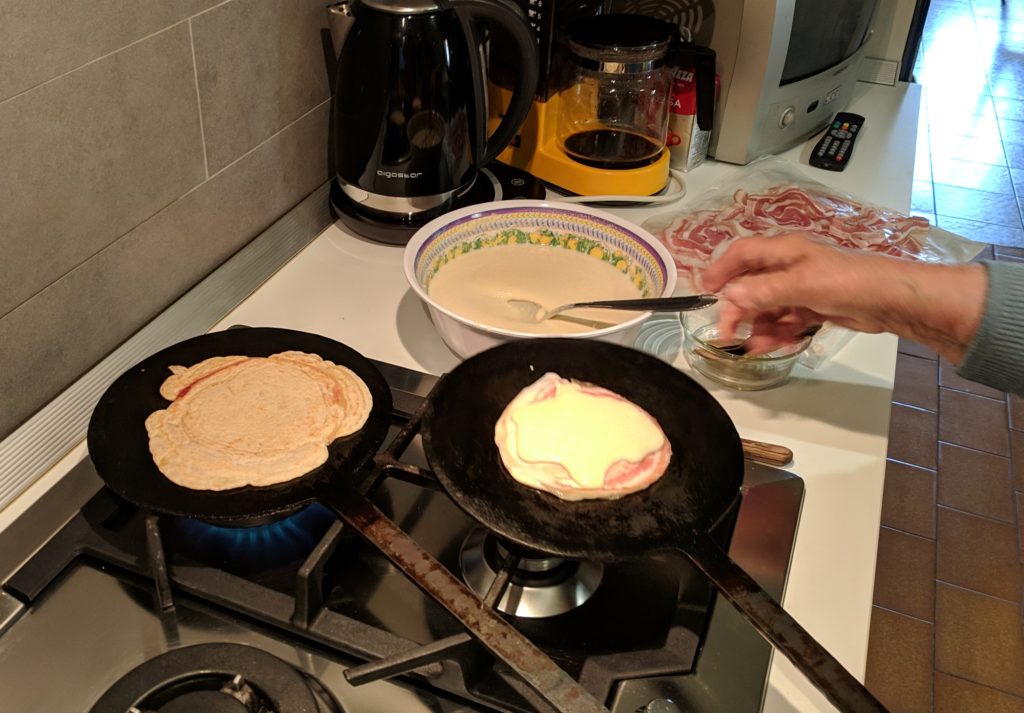
Bourbon is difficult to come by in Italy. After a bit of Russian vodka, we settled down to dinner: Fettine di Manzo in Umido (thinly sliced beef cooked in a small amount of tomato sauce with olives—and sometimes capers), purè di patate, cavoletto briefly boiled and dressed with olive oil, and bread. The olives were from their trees and cured by Zia Fidalma. The olive oil was also their own production. Fruit and cheese rounded out the meal for me, though there was also a homemade torta de mele (apple tart).
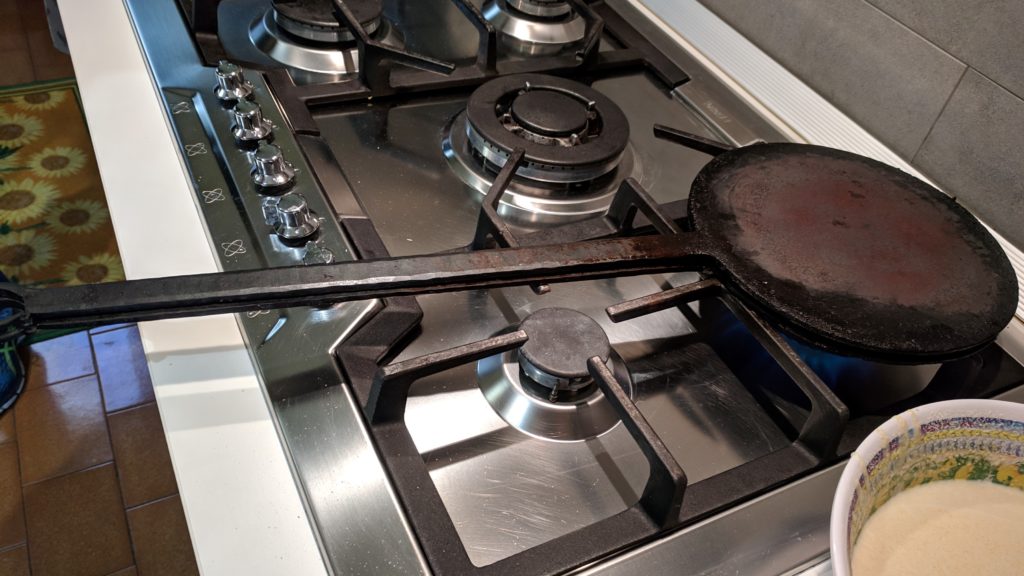
The next morning we did a grocery run to the big hypermarket in Gallicano, a nearby town, before stopping at the open-air mercatino in Bagni di Lucca. Back at home we stood around the stove while Zia Fidalma made focaccette rimpiturite, which we ate hot from the griddle with stracchino.
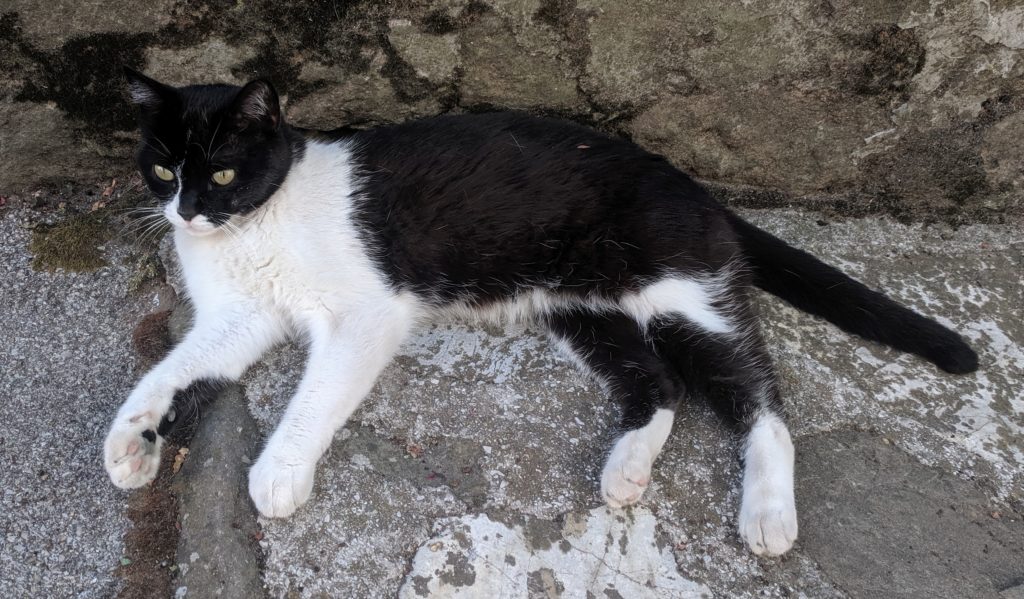
Focaccette are thin savory pancake-like affairs made from a batter of flour and cornmeal with a slice of pancetta in the middle. The whole thing is cooked between two cast iron griddles. I declined dessert but Zia Fidalma was prepared to make necci, a thin cake made of chestnut flour.
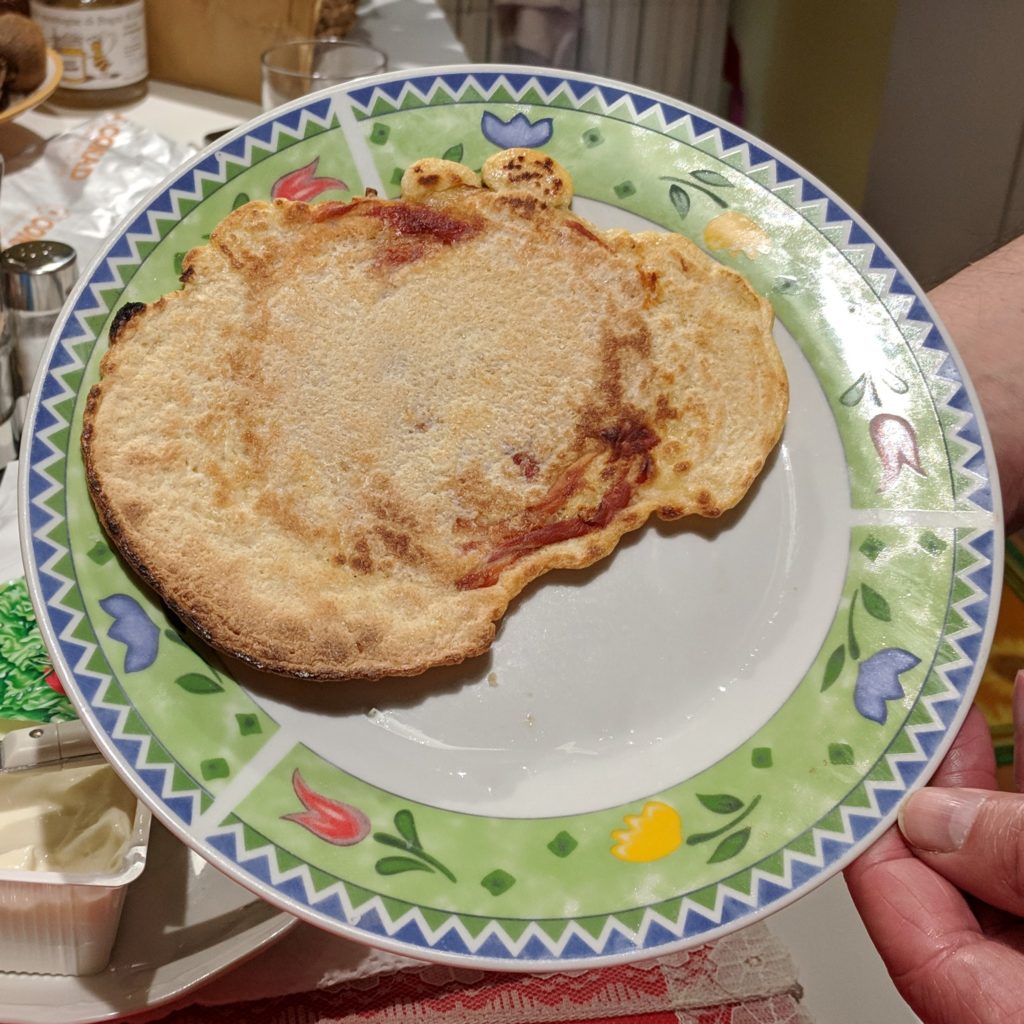
We did a bit of walking around Benabbio, including looking at the outside of houses for sale. The house adjacent to Massimo and Zia Fidalma is for sale. It has a kitchen, large salon, two bedrooms and a bath on the first floor. There is an additional room on the second floor. On the ground floor is a workroom, a large cellar, and a garage. I also got to meet Pancetta, a cat that belongs to Massimo’s cousin.
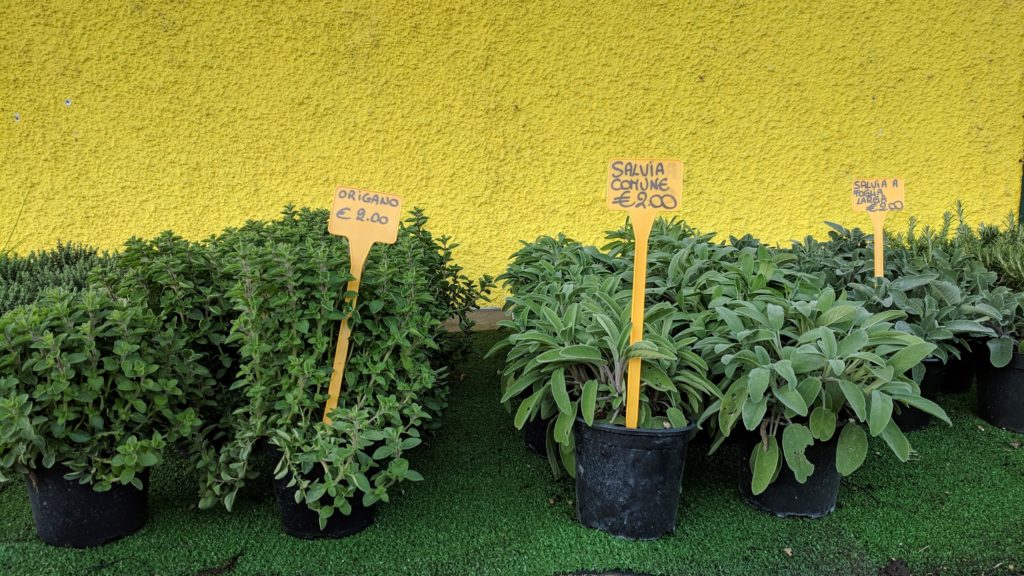
That afternoon we went for another drive, this time to Castelnuovo, hitting a few garden centers as well. In the evening, after another nip of vodka, we met Francesca for pizza at Es Vedra in Fornoli. Fornoli is where Casa Pieri is located. In fact, Casa Pieri and Es Vedra are on the same street: Viale Papa Giovanni XXIII (Pope John Paul XXIII Avenue). Casa Pieri is at #1. Es Vedra is at #94.
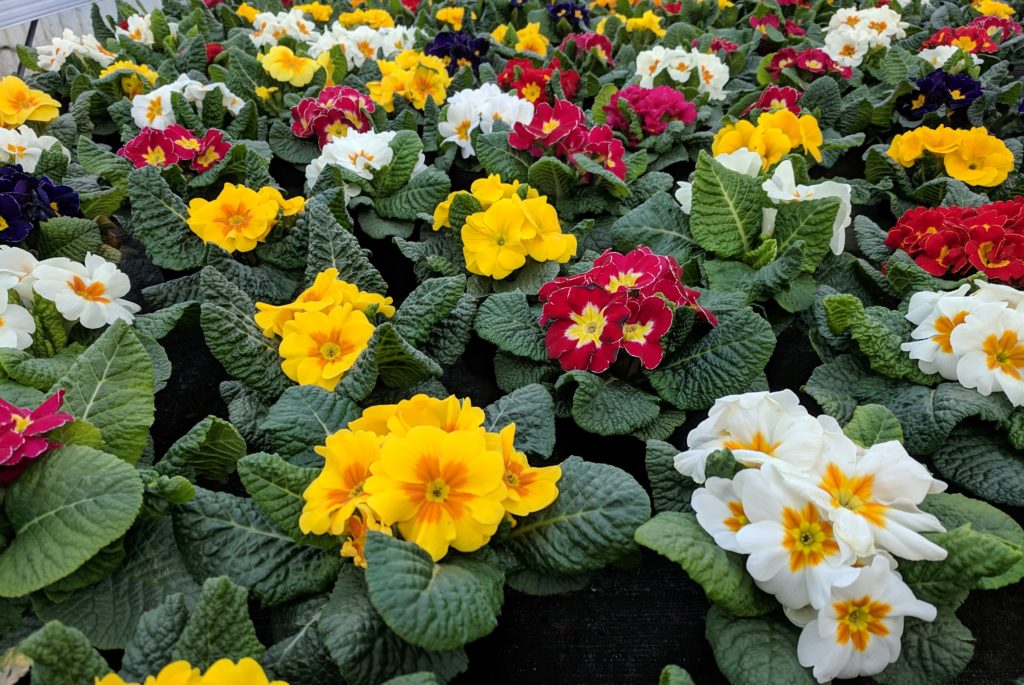
I’m happy to say that ‘nduja has invaded Tuscany. I had a really wonderful pizza with ‘nduja and the better part of half a liter of wine. Francesca assisted me by drinking a glassful after finishing her beer. The pizza with ‘nduja was listed on the menu as Pizza Amnesia. I can assure you that I don’t want to forget it! I now think of Es Vedra as our neighborhood pizzeria even though we don’t own Casa Pieri…yet!
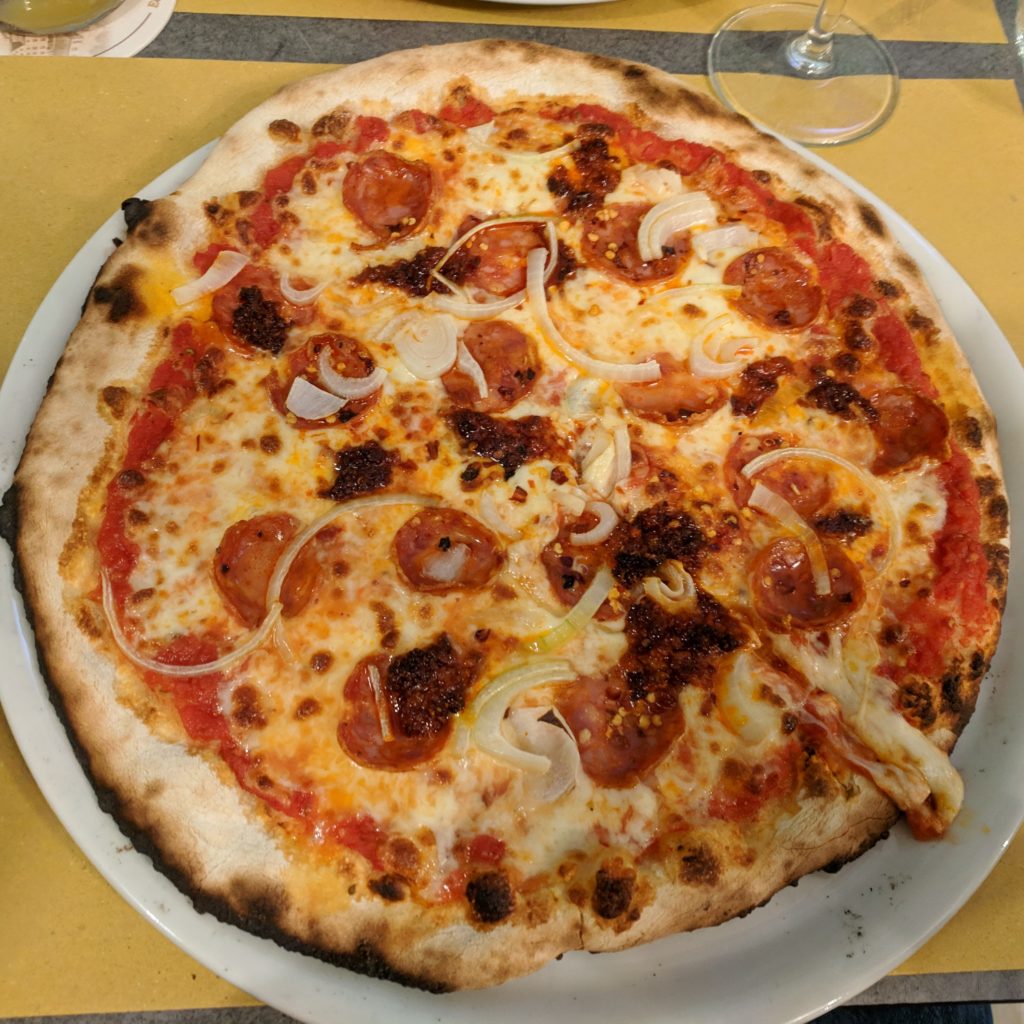
On Sunday I flew back to Calabria. This time I knew the drill with Priority and managed to get in the right line at the gate. After an uneventful flight home I was met outside of baggage claim by my driver. As we were walking out of the airport at 1:45 he told me he needed to be back at 3:00 to pick up some other people. Normally, the drive from the airport to the school is about 45 minutes, not counting parking, etc. I assumed he might be a bit late for his next trip. Not so! We made it back to the school in 23 minutes!!! Never once did I care to look at the speedometer as we were hurtling down the autostrada!
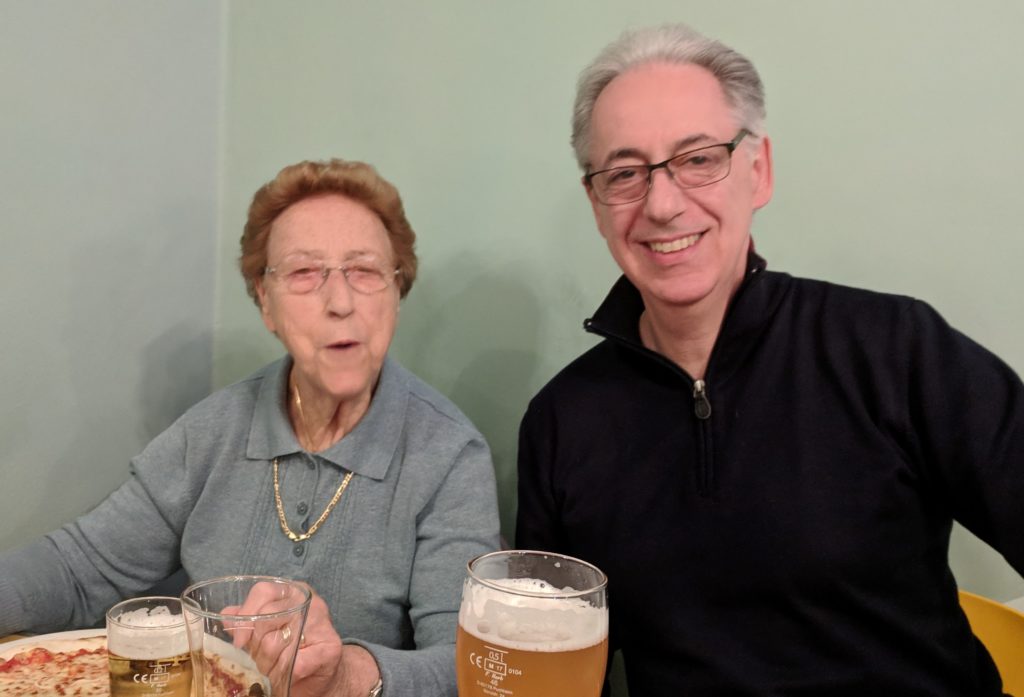
There were still two more days left to the break. Other than a three-hour walk on Monday that was prompted by a bourbon run, I spent the two days relaxing. The rest of the week was actually low key as well.
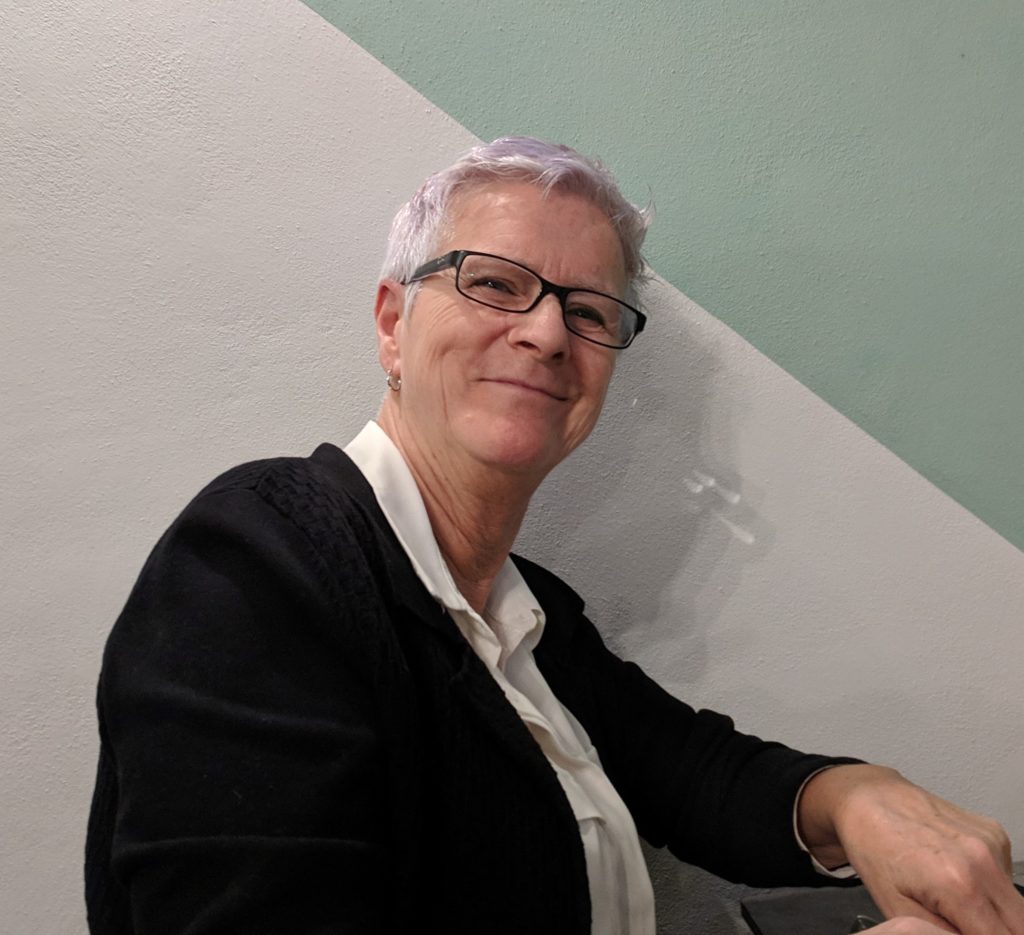
We had cultural visits on Wednesday and Thursday. The Wednesday visit was to an agriturismo where almost everything we ate, including all the cured meats, were made in house. The Thursday visit was centered around a visit to Squillace to see the castle, visit a small shop that produces hand-made and hand-painted terracotta and have lunch prepared by someone’s Nonna in the style of a shepherd’s lunch.
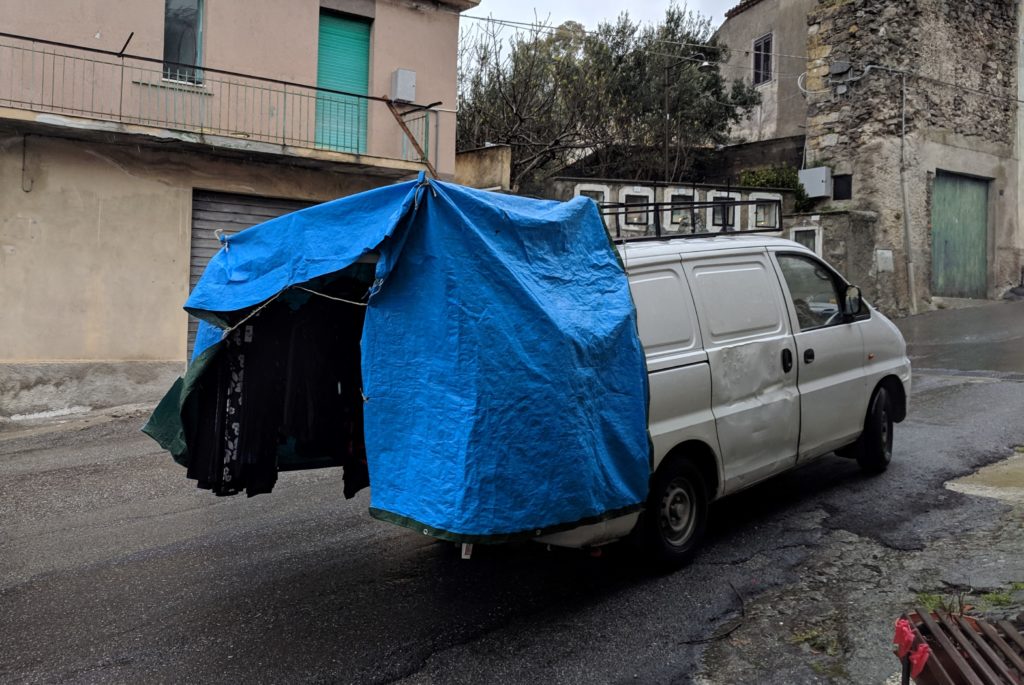
Despite the rain, we did the first two. Unfortunately, Nonna had been hospitalized and was unable to make lunch. Instead, we went to a restaurant where we were served a dizzying array of antipasti followed by a revelatory pasta of thick hand-made noodles (fileja, I believe) in a minimalistic, and minimal but delicious, tomato sauce with just the barest amount of porcini and shrimp. It was truly a perfect example of how less can be more.
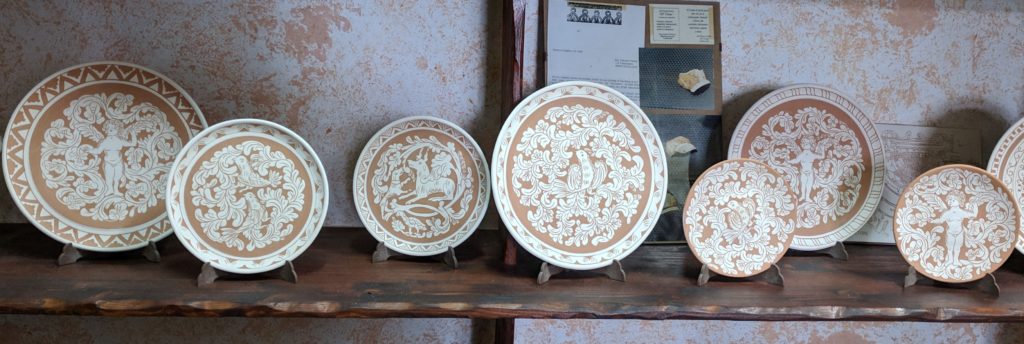
Friday was a day off though there was a run to the open-air market for those of us who wanted to go. I managed to buy a large quantity of pepperoncino picante, which I plan to use to make cured meats, as well as two dozen babà molds.
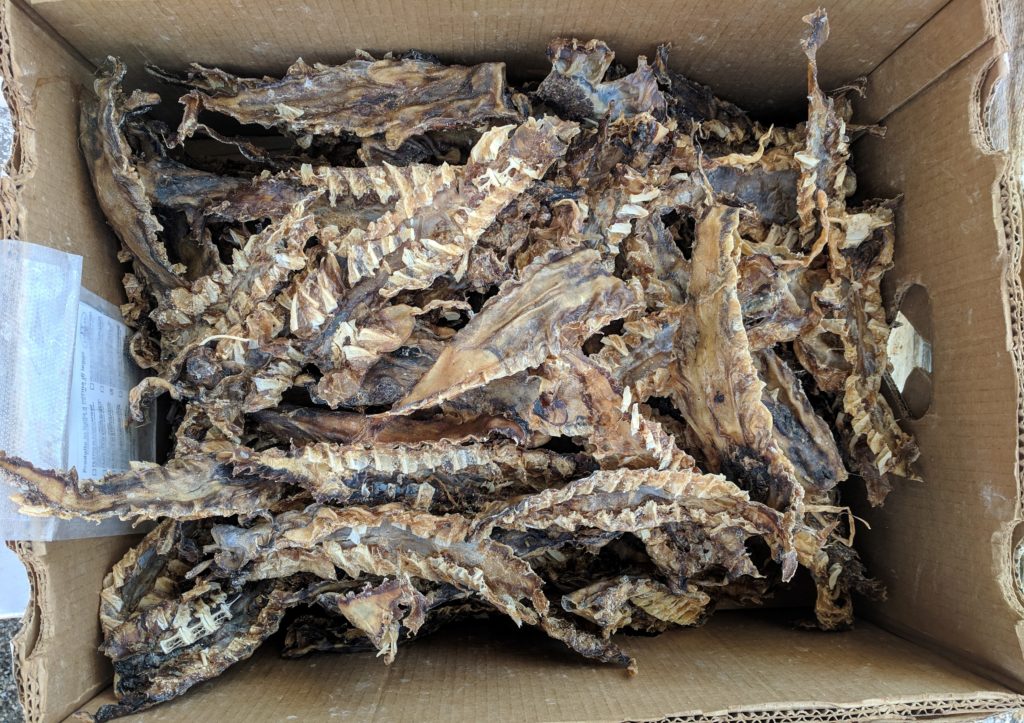
Saturday was the last day before Cheese Week and the addition of new students to our group. It had actually been several weeks since we last sat in the kitchen and had Chef John demonstrate the preparation of various dishes. It brought a comfortable feeling, which several of us discussed later, to sit there and have Chef John demonstrate how to make Penne all’Arrabiata; Fegato di Coniglio con Porri (rabbit liver with leeks); Gnocchi, Spade e Melanzane (gnocchi with swordfish and eggplant); and Pasta alla Carbonara—all of which we ate BEFORE LUNCH.
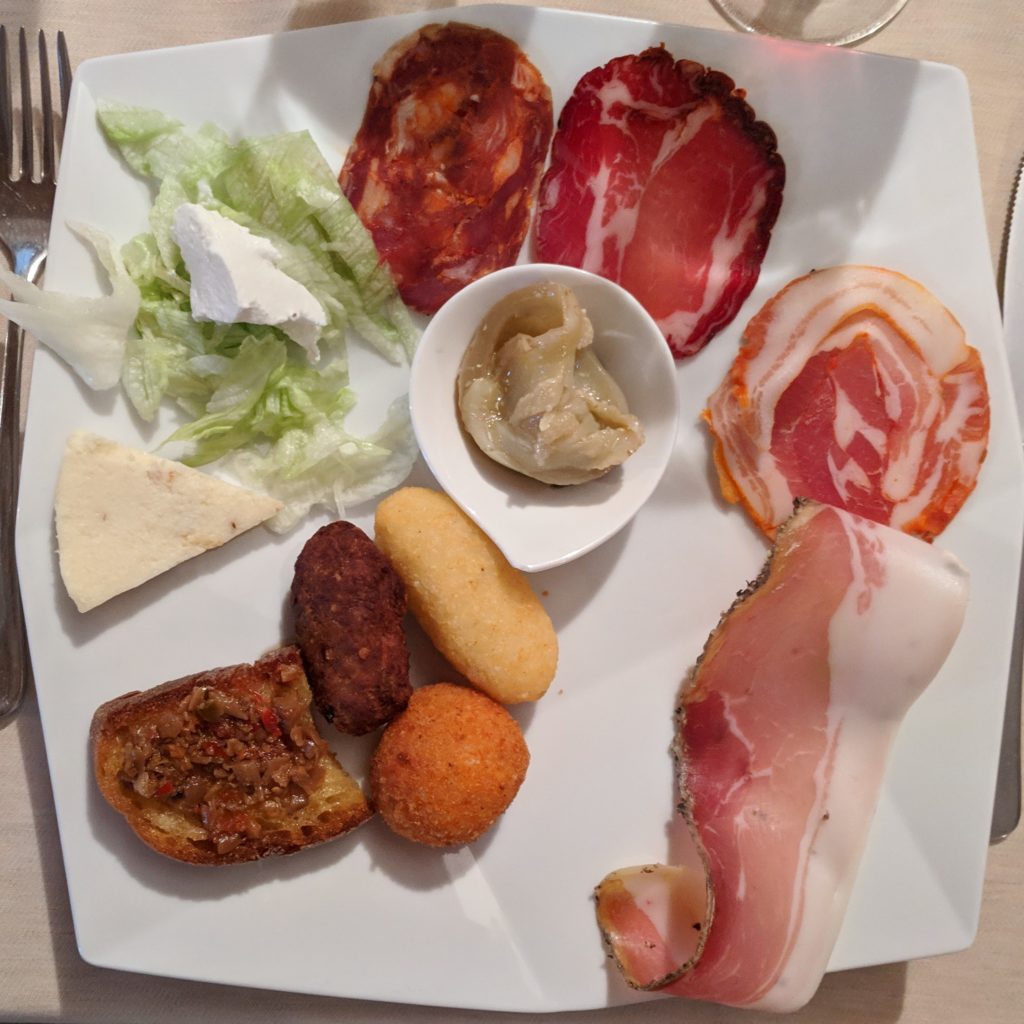
After lunch, Chef Juan demonstrated a technique for making a frittata, which we, of course, ate, with bread and Roasted Garlic Aioli that Chef Juan also made to accompany the frittata. In the afternoon we joined Chef Juan in the Pastry Lab to make Limoncello, Arancello, and Liquore di Melograno (pomegranate liqueur). Chef John sent in afternoon snacks. First was rigatoni with a sauce of pureed fresh green peas, the sauce for which he had demonstrated that morning. Later we got White Chocolate Orange Spuma (mousse) with Panettone Browned in Butter and dotted with Whipped Cream!
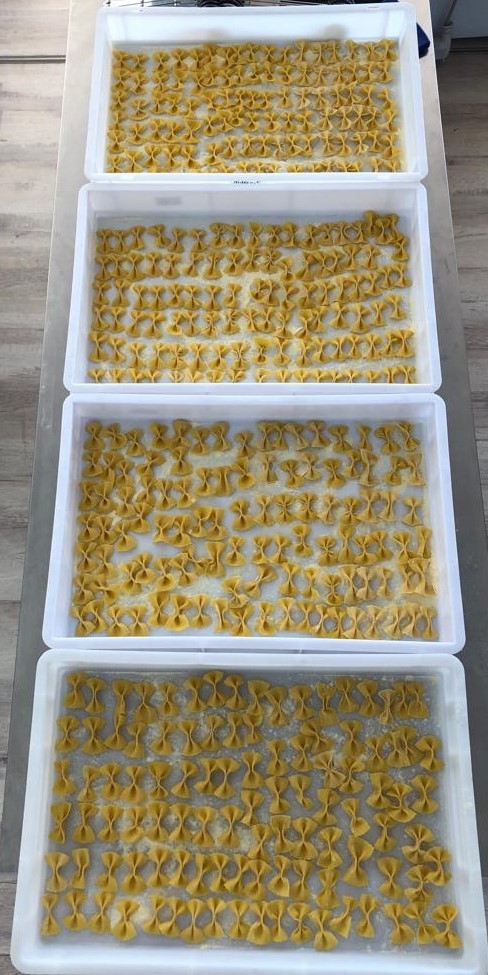
With Cheese Week about to start the next day, for which four additional students would join us, followed by our final menu execution the following week, Saturday was really the last day we would be together ourselves as a group. When all the work was done, Chef Juan sliced a beautiful Jamon Iberico de Bellota that he had brought back from Spain before we began the Masters Program in January. He also served an amazing Morcilla (blood sausage) from Spain made with fat from Jamon Iberico. A few bottles of wine rounded out the afternoon.
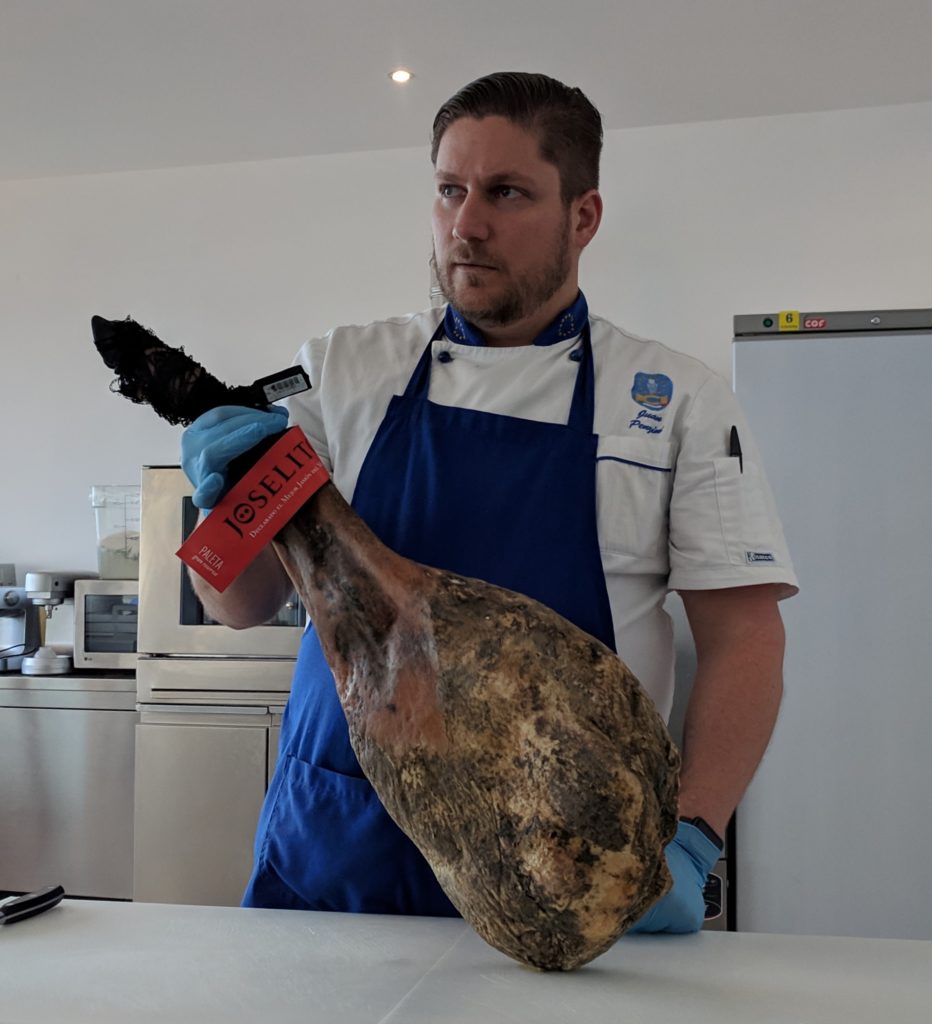
At 7:45 we headed out for pizza with the new students who were joining us for Cheese Week. Our new adventure was about to begin.
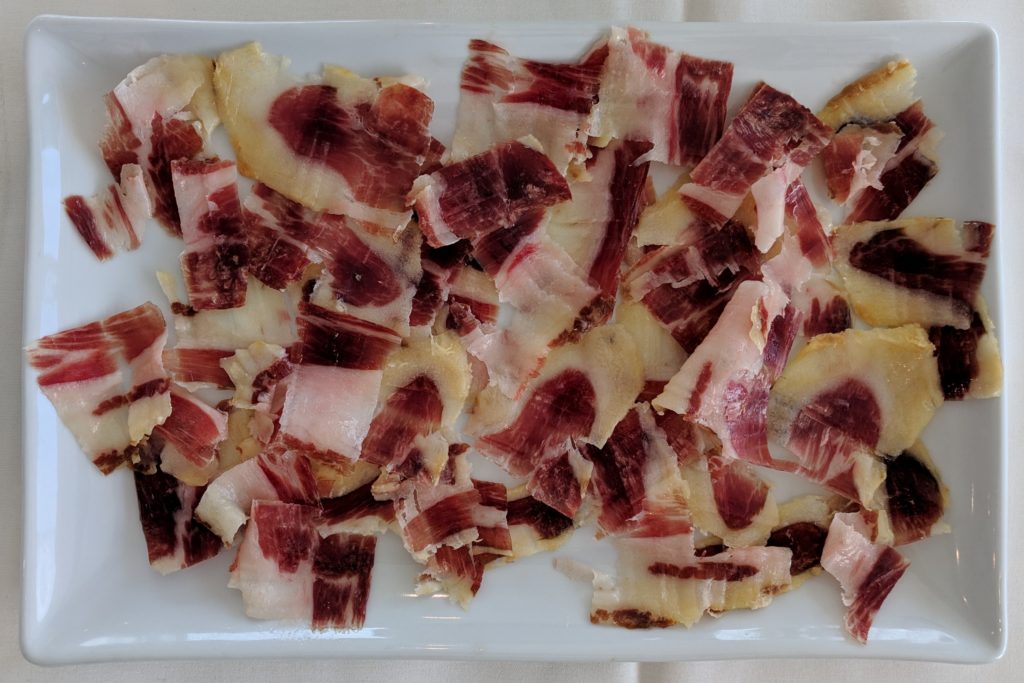

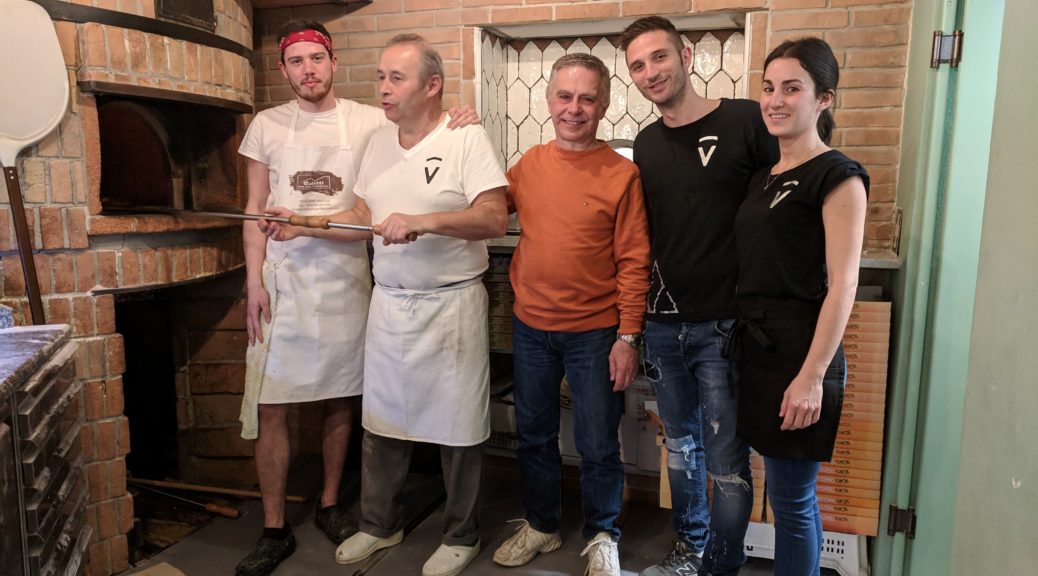
What a great time you are having in Italy! And every time I read a post I get hungry. However I was expecting a picture of the cat…..
It’s definitely been a great time. I didn’t thin to take a picture of the cat and the title of the blog only came to me later.
Well , only two days of stay but we had a great time ………. and food 😉 .
Zia was happy about your visit and we are looking forward to see you again in fall ,where you will taste other Tuscan recipes. Your aunt Fida said that she will give you the recipes and the ingredients and you will have to cook under her supervision . Guess we will have a lot of fun .
By the way it is Focaccette , not Foccacette 😉
I think we had a great time. I am looking forward to returning. I’ll be in touch soon as my plans are beginning to firm up. I’ll be sure to bring all my knives with me!
I corrected the spelling of focaccette. Thanks!